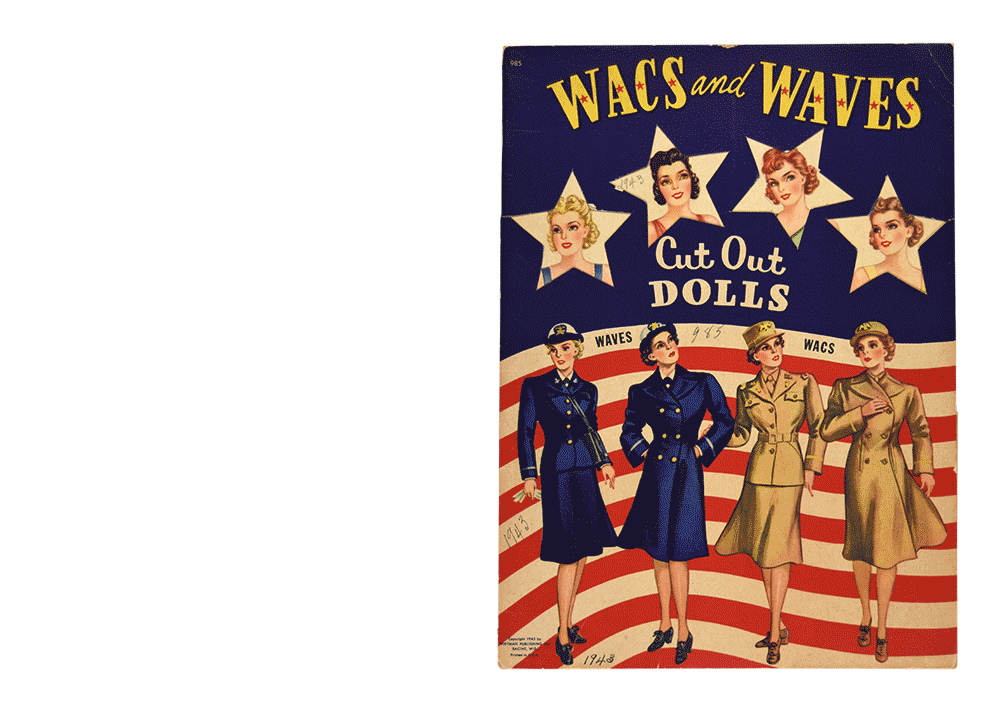
It's a Woman's War, Too!
World War II defined 1940s America, both in its brutal midst and its haunting aftermath. When the U.S. became officially involved in 1941, the need for a united national identity quickly superseded individual hopes and dreams. The fates of many men changed swiftly and dramatically. Women, on the other hand, experienced more nuanced shifts in identity.
The lack of able-bodied men on the home front meant that women needed to join the workforce—and they did: over a third of American women stepped out of the domestic sphere and into professional roles previously reserved for men. At home and abroad, they became air traffic control officers, munitions factory workers, and even prison guards. Though they faced sexual harassment, discrimination, and dangerous working conditions, these women—housewives, secretaries, and school teachers alike—found new purpose in sustaining the armed forces. Their contributions proved to be as vital to the war effort as the fighting itself.
%20SMALL.png)
Victory Paper Dolls, 1943, Saalfield Publishing Co.
.png)
Further Thought:
Paper dolls captured various aspects of the perfect woman. Based on these depictions, how did the ideal woman express her patriotism in the 1940s? How do her clothes and accessories reflect those ideals?
Women in Uniform
At the start of the war, the only women in uniform were nurses. Out of necessity, other branches followed suit, and by 1942 there existed: WACS (Women’s Army Auxiliary Corps), WAVES (Women Accepted for Voluntary Emergency Services), and WASPS (Women Airforce Service Pilots). While some of these women held down the fort at home, others did invaluable work abroad.
Despite their exclusion from direct combat, women risked their lives as ambulance drivers, mechanics, engineers, pilots, and intelligence officers, among countless other positions. By the end of the war, over 350,000 had joined the service–since there was no female draft, each one of them had volunteered.

WACS and WAVES , 1943, Whitman Publishing Co.

Crew of “The Paper Doll” with nose art (c. 1943)
.png)
Girl Pilots of the Ferry Command
1943, Merrill Publishing Co.
Paper Dolls at War
Soldiers far from home continued to admire the female form more than ever: mass-produced pictures of voluptuous models known as “pin-ups” were treasured commodities in U.S. barracks.
Military men would also create their own pin-up girls—even painting them on their aircraft. Placed near the front, or “nose,” of the plane, these images earned the name “nose art.” Paper dolls often bore a striking resemblance to pin-up girls with their perfectly symmetrical faces, fair skin, and statuesque figures. This similarity was not lost on aircraft painters, who included them among their subjects. Here, a generic female figure poses provocatively next to the plane’s namesake: “The Paper Doll.”
A New Normal
The newfound freedom women experienced outside the home threatened to be short-lived. After the war ended in 1945, the ongoing battle for women’s rights only intensified. Husbands, fathers, sons, and brothers who survived harrowing combat overseas craved the comforts of home and a return to normalcy—but there was a new normal waiting for them.
Changes in domestic life and women’s social mobility became a source of tension within families, industries, and society at large. The near-immediate effects of the baby boom settled the question for many women: it was time to return home and attend to their families. Others were demoted, fired, or chose to leave of their own volition; those that remained in the workforce still outnumbered prewar working women by 10%. Those who stayed, however, typically made half as much as their male equivalents. While progress was anything but linear, women continued to strive for personal autonomy.
.png)
.png)
Left: WAVE Officer's dress uniform; Right: Civilian dress
WACS and WAVES , 1943, Whitman Publishing
